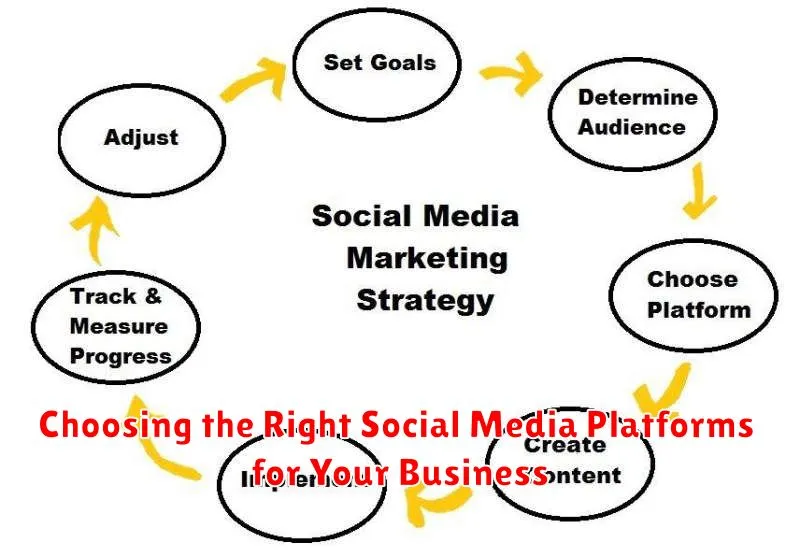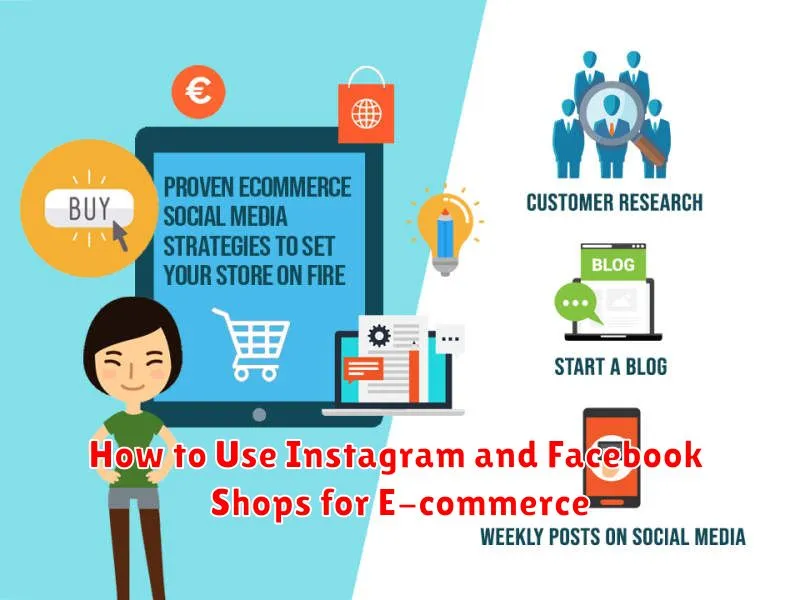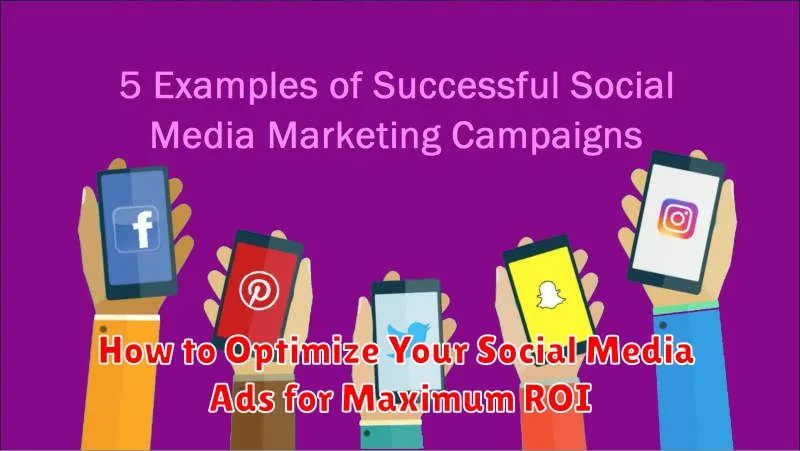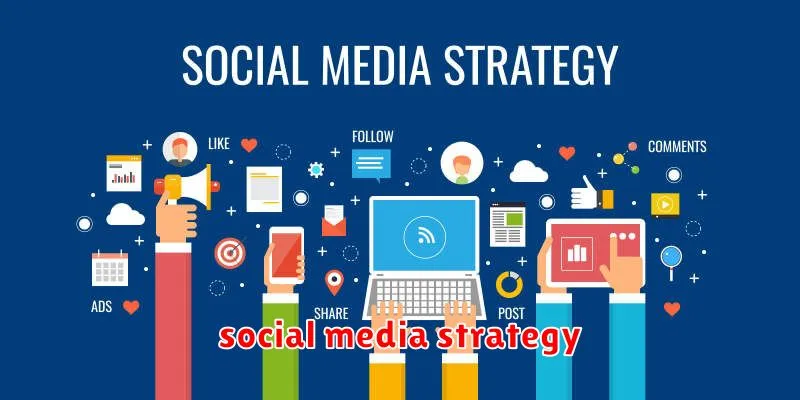Are you an e-commerce business owner looking to boost sales and increase brand awareness? This article delves into the best social media strategies for achieving significant e-commerce growth. We’ll explore how to leverage platforms like Instagram, Facebook, TikTok, and Pinterest to effectively reach your target audience, drive traffic to your online store, and ultimately, maximize your return on investment (ROI). Discover proven techniques for creating engaging content, running successful social media advertising campaigns, and building a loyal community around your brand. Learn how to harness the power of social media to achieve sustainable e-commerce success.
Choosing the Right Social Media Platforms for Your Business

Selecting the optimal social media platforms is crucial for e-commerce success. Your choice should align with your target audience and business goals. Understanding your customer’s online behavior is the first step. Where do they spend their time? Which platforms do they use most frequently?
Consider the nature of your products or services. Visually appealing products might thrive on Instagram or Pinterest, while detailed explanations might benefit from platforms like Facebook or Twitter. Platform strengths also matter; Instagram excels at visual storytelling, while LinkedIn focuses on professional networking. A diversified strategy across several platforms might be ideal, but prioritize platforms where your target audience is most active.
Consistent branding across all chosen platforms is essential. Maintain a unified voice and visual identity to reinforce brand recognition. Remember that managing multiple platforms requires time and resources; start with one or two platforms and expand as your resources and expertise grow.
Finally, track your results. Use analytics to monitor your performance on each platform. This data informs your strategy, allowing you to optimize your efforts and maximize your return on investment (ROI).
Creating Engaging Content That Drives Sales
Creating engaging content is paramount for e-commerce success. High-quality visuals, such as professional product photos and videos, are crucial for showcasing your offerings effectively. Compelling storytelling, highlighting customer benefits and brand values, fosters connection and builds trust.
User-generated content (UGC) leverages the power of authentic reviews and testimonials, significantly influencing purchasing decisions. Interactive content, such as polls, quizzes, and Q&A sessions, enhances audience engagement and gathers valuable feedback. Strategic use of influencer marketing can broaden your reach and tap into established audiences.
Clear calls to action (CTAs) are essential for driving conversions. These should be prominent and strategically placed within your content, guiding users towards desired actions, such as making a purchase or visiting your website. Remember to track your results, analyzing which content resonates most effectively with your audience, allowing you to refine your strategy for optimal performance.
Ultimately, the key is to understand your target audience and tailor your content accordingly. Consistent posting of high-quality, engaging content is vital to fostering brand loyalty and driving sales growth. Prioritize value over volume; one well-crafted piece of content can have a far greater impact than several low-quality posts.
How to Use Instagram and Facebook Shops for E-commerce

Integrating Instagram Shops and Facebook Shops into your e-commerce strategy offers a powerful way to reach potential customers directly within their preferred social media platforms. Both platforms allow you to create visually appealing product catalogs, showcasing your merchandise with high-quality images and detailed descriptions.
To set up Instagram Shopping, you’ll first need a Facebook business page and a Facebook Shop connected to your e-commerce platform (such as Shopify or WooCommerce). Once configured, you can tag products in your posts and stories, allowing users to seamlessly browse and purchase directly through the app. Utilize high-quality images and engaging video content to highlight your products’ features and benefits.
Facebook Shops offers a similar experience, creating a dedicated storefront on Facebook where customers can browse your catalog, explore collections, and make purchases. Use targeted advertising to reach specific demographics and increase brand awareness. Both platforms provide analytics dashboards allowing you to monitor sales, engagement, and campaign performance. Leveraging these insights will optimize your strategies for maximum impact.
Key strategies for success include running engaging contests and giveaways, utilizing influencer marketing to reach wider audiences, and consistently posting high-quality content showcasing your products. Remember to monitor your shop’s performance, making adjustments to your strategies based on data analysis.
The Role of Influencers in Social Media Marketing
Influencer marketing is a powerful tool for e-commerce growth. By partnering with individuals who have a significant and engaged following on social media platforms, businesses can leverage their credibility and reach to promote their products or services.
Influencers can significantly impact brand awareness and drive sales. Their authentic endorsements often resonate more deeply with consumers than traditional advertising, fostering trust and loyalty. Strategic collaborations with influencers can target specific demographics and increase brand visibility within relevant online communities.
Successful influencer marketing requires careful selection of partners who align with the brand’s values and target audience. Campaign measurement is crucial to track the effectiveness of influencer collaborations and optimize future strategies. Key metrics include engagement rates, website traffic, and ultimately, sales conversions.
Ultimately, integrating influencer marketing into a comprehensive social media strategy can provide a significant boost to e-commerce businesses, helping them connect with potential customers on a personal level and achieve measurable growth.
How to Optimize Your Social Media Ads for Maximum ROI

Optimizing social media ads for maximum return on investment (ROI) requires a strategic approach. Begin by clearly defining your target audience; detailed audience segmentation leads to more effective ad targeting and higher conversion rates.
Compelling ad creatives are crucial. Use high-quality visuals and concise, benefit-driven copy that resonates with your target audience. A/B testing different ad variations allows you to identify top performers and continuously improve campaign effectiveness.
Strategic bidding is key to maximizing ROI. Explore different bidding strategies (e.g., cost-per-click, cost-per-thousand impressions) and adjust based on performance data. Utilizing conversion tracking is essential to accurately measure results and make data-driven optimizations.
Regularly monitor and analyze your ad performance. Key metrics include click-through rate (CTR), conversion rate, cost per acquisition (CPA), and return on ad spend (ROAS). Identify underperforming elements and make necessary adjustments to improve your campaign’s overall efficiency.
Finally, consider incorporating retargeting into your strategy. Re-engaging users who have previously interacted with your brand increases the likelihood of conversions, maximizing the value of your ad spend.
Using Social Media Analytics to Improve Performance
Social media analytics are crucial for optimizing e-commerce performance. By tracking key metrics, businesses gain valuable insights into what’s working and what’s not.
Analyzing engagement rates (likes, shares, comments) reveals content resonance. Website traffic driven from social media showcases campaign effectiveness. Monitoring conversion rates from social media to sales directly measures ROI.
Demographics and audience segmentation data help tailor content to specific customer groups. Identifying peak posting times maximizes reach and engagement. Tracking competitor activity provides valuable benchmarking information.
Using this data, businesses can refine their strategies. Underperforming content can be revised or removed; successful tactics can be amplified. A/B testing allows for further optimization of content and ad campaigns.
Ultimately, leveraging social media analytics facilitates data-driven decision-making, leading to increased efficiency and improved return on investment for e-commerce businesses.
How to Build a Community Around Your Brand
Building a strong community around your brand is crucial for e-commerce success. It fosters loyalty, increases brand awareness, and drives sales.
Start by identifying your target audience and understanding their interests and needs. Create engaging content that resonates with them, focusing on value and interaction rather than solely on product promotion. This could include behind-the-scenes glimpses, user-generated content showcases, or interactive polls and quizzes.
Consistent engagement is key. Respond promptly to comments and messages, fostering a sense of personal connection. Encourage users to interact with each other by creating dedicated spaces for discussions or feedback. Consider hosting online events, such as Q&A sessions or live product demonstrations, to further build rapport.
Leverage the power of user-generated content. Encourage customers to share their experiences with your brand, offering incentives for participation. This not only generates authentic content but also showcases your brand’s positive reputation.
Finally, remember that building a community takes time and effort. Be patient, consistent, and authentic in your interactions, and you will gradually cultivate a loyal and engaged following.
Trends in Social Media Marketing for E-commerce
Short-form video continues to dominate, with platforms like TikTok and Instagram Reels driving engagement. Livestream shopping is gaining traction, offering immersive brand experiences and direct sales opportunities.
User-Generated Content (UGC) is increasingly valued for its authenticity. Encouraging customers to share their experiences builds trust and social proof.
Influencer marketing remains crucial, but micro-influencers are becoming more impactful due to their higher engagement rates and perceived authenticity.
Personalization is key. Utilizing data to tailor content and ads to specific customer segments improves conversion rates.
Community building through interactive features, contests, and direct engagement fosters brand loyalty and advocacy. Measuring ROI through comprehensive analytics remains essential for optimizing campaigns and maximizing return on investment.
Shopping features integrated directly into social media platforms streamline the purchase process, making it easier for customers to buy directly from their favorite platforms.
Augmented Reality (AR) and virtual reality (VR) experiences offer innovative ways to engage consumers and showcase products interactively.

